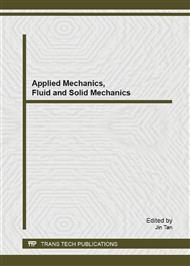[1]
Sudarmadji, in: Procedures for Analysis of Food and Agriculture, Liberty, Yogyakarta, (2007).
Google Scholar
[2]
SaptaMayaRandD., in: PhysicoChemicalExtractionStudyPure Coconut Oil(Virgin CoconutOil, VCO) ItsMadeWithCoconut MilkCreamFreezingMethodsin TechJournal. Ind. Pert., Vol18(2), (2010), pp.71-78.
Google Scholar
[3]
Sumarni, et al., in: UsedCooking OilPurificationProcessUsingMixedBentoniteandCharcoal, Journal ofChemical Engineering, AKPRIND, Yogyakarta, (2004).
Google Scholar
[4]
Taufiq, M., in: UsedCooking OilPurification(Jelantah) Using Moringaseeds (MoringaoliferaLamk), State Islamic Universityof Malang, (2007).
Google Scholar
[5]
Hana,T., in: Technology ApplicationsMembraneOn MakingVirginCoconutOil(VCO), PT. NawapancaAdhiCipta, (2005).
Google Scholar
[6]
Piluhartono, in: Physical Properties ofThinFilmStudiesNataDeCocoinMembraneUltrafiltrsiin Journal ofBasic Science, Vol4, No. 1., (2003), pp.52-57.
Google Scholar
[7]
Sato, T. et. al., in: Preparation of cellulose derivatives containing the viologen moietyinJournal of Polymer Science, Part C: Polymer Letters Vol. 6, Issue 8, (1988), p.341–345.
Google Scholar
[8]
Mulder,M., in: Basic Principle of membraneTechnology, 2ndedition, Dordrecht: Kluwer Academic Publisher, (1996).
Google Scholar
[9]
Shibazaki, H., Kuga., S. Fumihiko, O. And Usuda, M., in: Bacterial cellulose as separation mediumin Journal of Applied Polymer Science, vol. 50, (1993), pp.965-969.
DOI: 10.1002/app.1993.070500605
Google Scholar
[10]
E.B. Bernardo, B. A Neilan, and I. Couperwhite, in: Characterization, Differentiation and identification on wild-type cellulose-sythesizing Acetobacer strains involved in nata de coco productionin System, Appl. Microbiol 21, (1998), pp.599-608.
DOI: 10.1016/s0723-2020(98)80073-8
Google Scholar
[11]
Kuan-Chen Cheng, Jeffrey M. Catchmark, and Ali Demirci, in: Effect of different additives on bacterial cellulosa production by Acetobacter xylinum of material propertyin Cellulose, Vol. 16, (2009), 1933-1045.
DOI: 10.1007/s10570-009-9346-5
Google Scholar
[12]
Suwannapinunt, N., JiraponBurakorn and Suwannee Thaenthanee, in: Effect of culture conditions on bacterial cellulose (BC) production from Acetobacterxylinum TISTR76 and physical properties of BC parchment paperin Suranaree J. Sci. Technol., Vol. 14(4), ( 2007), pp.357-365.
Google Scholar
[13]
Nishi, Y., Uryu, S. Yamanaka, K. Watanabe, N. Kitamura, M. Iguchi, in: Stucture and mechanical properties of sheet prepared from bacterial celllulose inJournal of Material Science, Vol. 24, (1990), pp.3141-3145.
DOI: 10.1007/bf01139032
Google Scholar
[14]
Czaja W, Romanovicz D, Brown RM, in: Structural investigation of microbial cellulose produced in stationary and agitated culturein Cellulose, Vol. 11, (2004), pp.403-411.
DOI: 10.1023/b:cell.0000046412.11983.61
Google Scholar
[15]
Seifert M, Hesse S, Kabrelian V, Klmn D., in: Controling the water content of never dried and reswollen bacterial cellulose by the addition of water-soluble polymers to the curve mediumin J. Poly. Sci: Part A: Polymer Chemestry, Vol. 42, (2003).
DOI: 10.1002/pola.10862
Google Scholar



